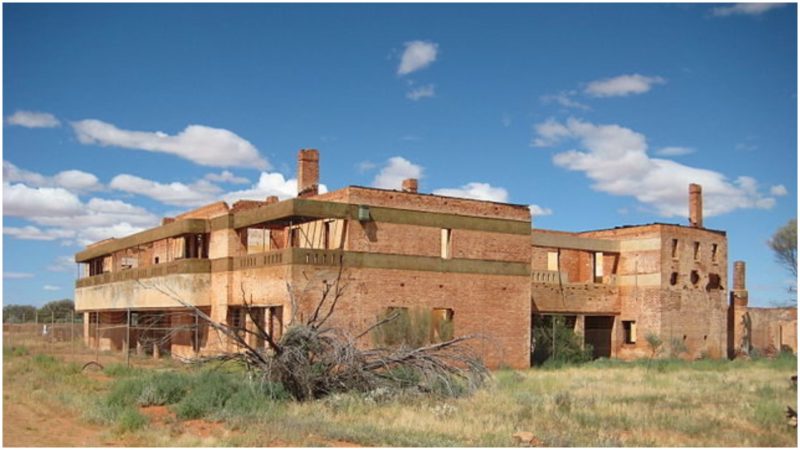Seen from a distance, the forgotten ruins of the ghost town of Big Bell look like a mirage. Especially on hot summer days. The last remains of this once-thriving mining town located in the Murchison region of West Australia (near the town of Cue and approximately 385 miles north of Perth) now are only undulating shadows between the hot sun and the arid ground.
It is hard to believe this semi-desert land, where bushes are the only true vegetation and trees are a rare sight on the harsh horizon, hosted a bustling community of people until the middle of the 1950s.
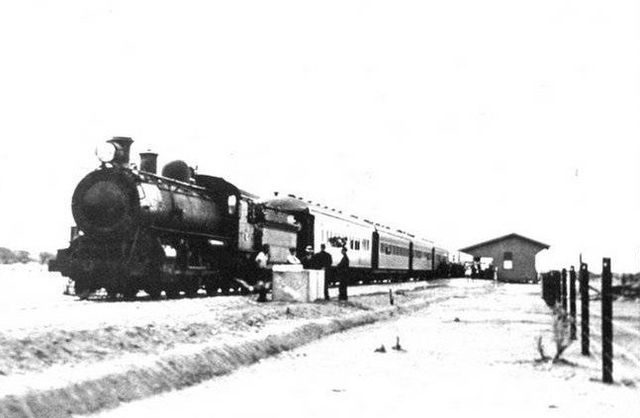
The people left the town around 60 years ago and, since then, it has been completely abandoned. From a long time ago the town entered into a process of gradual disappearance. Now the only true remainder of the town’s glorious past is the large Big Bell Hotel. The only inhabitants that remain in this once busy and prosperous town are snakes, lizards, rats, rabbits, and some birds. There are also few relics of a time long past, but they are hardly recognizable. Little by little and day by day, the last remaining ruins of Big Bell are slowly becoming red dust.
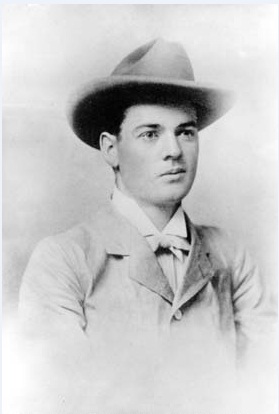
It could be said that the story of Big Bell began in 1902 when a gold deposit was discovered in the area. Interestingly, Herbert Hoover, who would later become the 31st president of the United States in 1929, worked in Big Bell mine. Before entering politics he was a successful mining engineer and geologist, and at the beginning of the 20th century he worked on many mines in Western Australia. Surface mining began at Big Bell in 1904, but the town of Big Bell wasn’t born until 1936, when the Premier Gold Mining Company expanded operations to reach deeper seams by pit mining. In March of 1936, a railway from the nearby town of Cue was constructed. Thus the conditions for erecting a mining town were made at last.
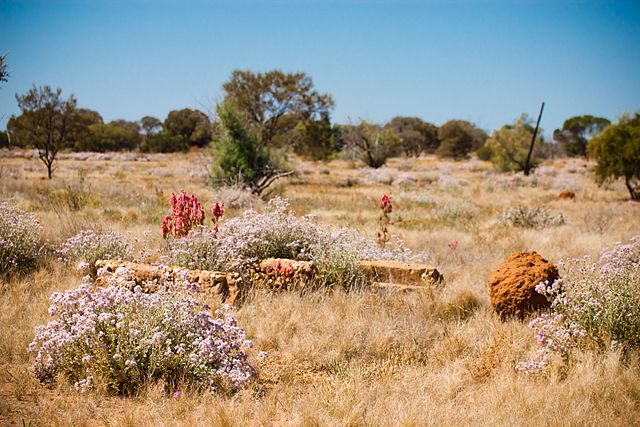
The town initially thrived with more than 400 employees. But the start of World War II slowed the further development of Big Bell. The mine was closed because all of the workers were recruited to the army and the machinery of the mine was transferred to big cities to be used in the war industry. Many small towns throughout Australia during the war were almost depopulated. In those days, Big Bell had only 15 residents.
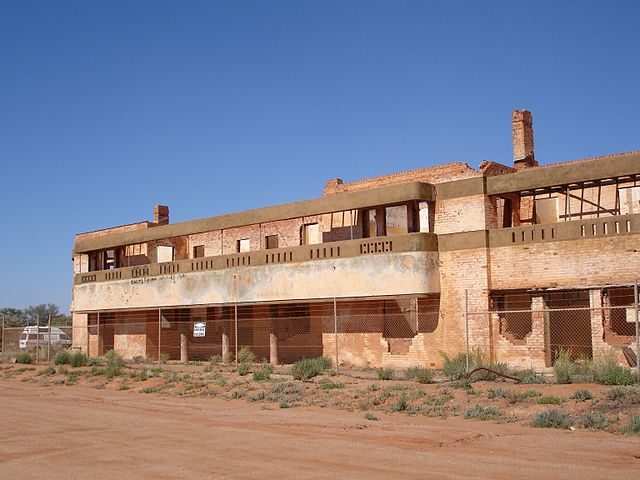
When the war ended, the mine was opened again. By 1951, the town of Big Bell had its peak with a population of more than 1,000 people. Unfortunately, the mine gradually became unprofitable. The amount of gold reached its minimum and the mine was closed in 1955, and it’s closure heralded the rapid decline of Big Bell. The people left the town and moved to the nearby towns of Cue, Mt. Magnet and Meekatharra. In some way, they moved their houses too, because they took the useful materials of the buildings with themselves.
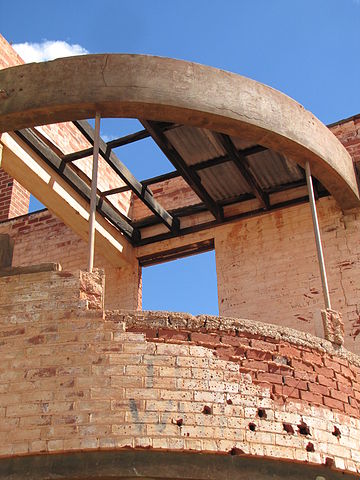
Big Bell was typical Australian mining town erected in the days of the Australian gold rush. At its zenith on its wide streets, which today are dirt tracks, were placed many buildings, mostly small but well-built houses. The town was supplied with water by three wells. There was also a modern power plant which supplied the town with electricity 24/7 without any problems. Several churches of different denominations existed in the small town and the mail came by plane or by train three times a week. The social life was highly developed and the town’s hotel became a center where most of the social events happened, for example, regular movie projections.
The Big Bell Hotel was opened in 1937. Designed and constructed in classic art deco style, the large, grand hotel was famous for its curved balustrade placed at the front of this once majestic building. Local oral legend says that hotel’s bar was the longest bar in Australia at the time.
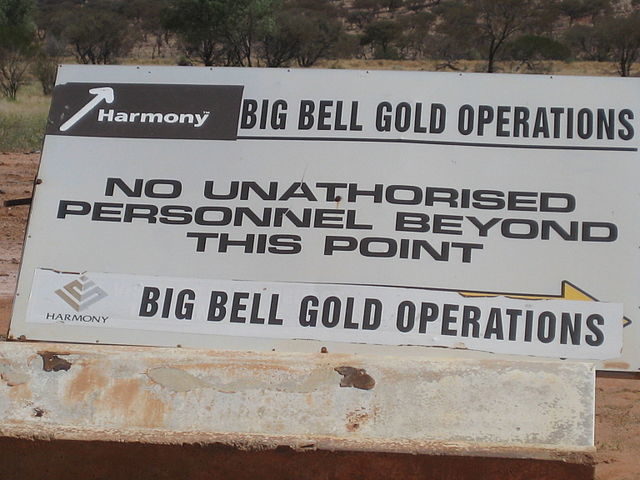
The Big Bell Gold Mine was reopened in the 1980s, when new deposits of gold could be extracted using modern mining technologies, but the former inhabitants never returned back in the town of Big Bell. The mine was closed in 2003 and the machinery was moved to another mine.
